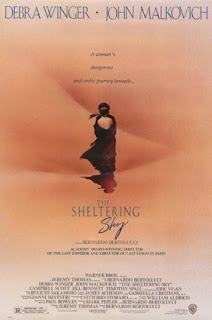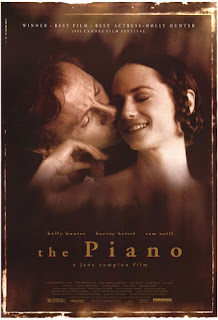September 14th: THE SHELTERING SKY (Bernardo Bertolucci, 1990)
An American couple explore the land and culture of Morocco and beyond with transformative and tragic results.
New York City-based writer Paul Bowles was a figure in both the Paris and Berlin literary circles of the 1930s. He relocated to Tangier, Morocco with his wife Jane (also a writer) in 1947, and stayed for the remaining 50+ years of his life. His best-known work, The Sheltering Sky, was partially autobiographical and written mostly during travels through the Sahara Desert under the influence of hallucinogens.
Italian director Bernardo Bertolucci, having made his name as one of contemporary cinema's great sensualists (The Conformist, Last Tango In Paris) was coming off his biggest success to date, The Last Emperor, winner of 9 Academy Awards. Instead of returning to Europe or his native country, he thought to continue further into unfamiliar territory with the North Africa-set tale, but looking more inward as opposed to the previous costume epic. Bertolucci and co-writer Mark Peploe were interested in the story's fractures central relationship and the clash of western and eastern perspectives.
Much of the Oscar-winning crew from The Last Emperor was reassembled: in addition to Peploe, returning were British producer Jeremy Thomas, Bertolucci's longtime cinematographer Vittorio Storaro (Apocalypse Now), production designer Ferdinando Scarfiotti, costume designer James Acheson, editor Gabriella Cristiani, Ryuichi Sakamoto (The Revenant).
Originally intending to cast William Hurt and Melanie Griffith in the lead roles, budget constraints led him to the more idiosyncratic actors John Malkovich and Debra Winger, both of whom disappeared into their roles of Port and Kit Moresby. Also in the cast are Campbell Scott (Ro, ger Dodger), British actors Timothy Spall and Jill Bennett, Vietnamese dancer/choreographer Éric Vu-An, and in a unique move, the mysterious presence of author Paul Bowles himself, who also narrates in several key scenes.
The film was shot totally on location in Morocco, Algeria, and Niger (the first feature film production to take place in the latter). Mostly using existing structures, one major constructed set was a fort in the middle of the desert, which Thomas claimed was the most expensive he'd ever overseen. Winger continued to explore/research her character by staying with tribes and in small villages.
Bertolucci began editing on a new laserdisc system, one of the first non-linear, digital methods. He then shifted to the traditional Steenbeck machine for a more detailed, organic process with the film negative itself. The film was released to mixed reviews, and failed to duplicate the commercial or critical success of its predecessor, only receiving Golden Globe nominations for Bertolucci's direction and the musical score (the latter winning).
Running time is 2 hrs, 15 min.










Comments
Post a Comment